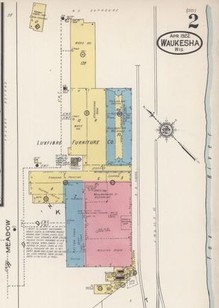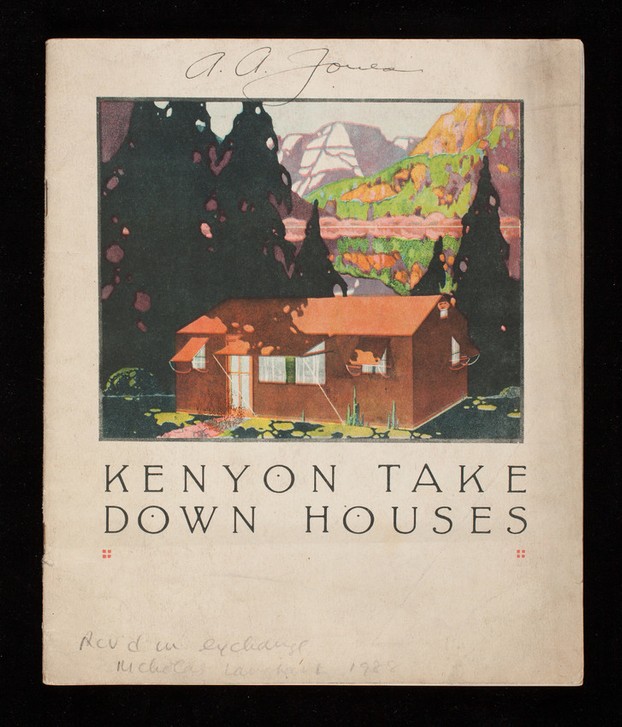R. L. Kenyon Company
Introduction
Text-to-speech Audio
Established in 1910, the R. L. Kenyon company produced portable housing and woven furniture. During World War I the company also produced cots for soldiers. In 1932 the company, then named the Luxfibre company, went out of business and was liquidated. Although short lived, the Kenyon company ultimately had a profound impact on those who lived in their portable houses, as well as providing an example of a company that maintained high standards and quality.
Images
Luxfibre on the 1922 Sanborn Map

Advertisement for the Kenyon Take Down Houses

Backstory and Context
Text-to-speech Audio
Roy L. Kenyon was born in 1878 in Trempealeau, Wisconsin. By 1910 he lived in Waukesha, and that same year he established the R. L. Kenyon company. The company originally produced portable houses and boat tops, and marketed their portable houses as summer homes, property additions, and an easy way to get fresh air. The cost for these homes varied greatly, depending on whether it was a custom build and the size.
During the first World War, the Kenyon company produced cots for soldiers, receiving orders of around 175,000 cots at a time. This led to an increase in employment, with the company employing between 250 and 300 people by 1917. Many of these workers were housed by the company, in company provided Kenyon take-down homes. The company is noted to have treated their workers well, and traditionally housed many of their employees, with one writer noting that the women employed by the company were housed in "a large roomy house where a matron sees that the girls have nice sleeping rooms, good board and a good time, and all at actual cost to the company."[1] By caring for their employees, the Kenyon company retained their workers and established a positive reputation.
Near the end of the war, the company pivoted to create woven wooden furniture and began branding themselves as Luxfibre company. In 1917 the well known Waukesha photographer Warren S. O'Brien took photos for the company's furniture catalogue. Although the company produced high quality furniture, they struggled to convince consumers to spend their money. In 1932 the company went out of business, leaving behind a legacy of innovation and invention.
Sources
[1]A Little Journey to "Luxfibre". The Furniture Manufacturer and Artisan, vol. 15 76 - 77.
Early Waukesha Manufacturing. Landmark. 1973. 12 - 13.
Haight, Frank P. "The Building Up of the "Take Down" House." The Waukesha Freeman (Waukesha) 1914.
"Kenyon Company Starts War Work." The Waukesha Freeman (Waukesha) April 26th, 1917.
"Local Manufacturer Advertised Elaborate Line: Woven Furniture Still around." The Waukesha Freeman (Waukesha) January 3rd, 1968.
"Many Residences Will Be Built." The Waukesha Freeman (Waukesha) August 21st, 1913.
Library of Congress
Historic New England
